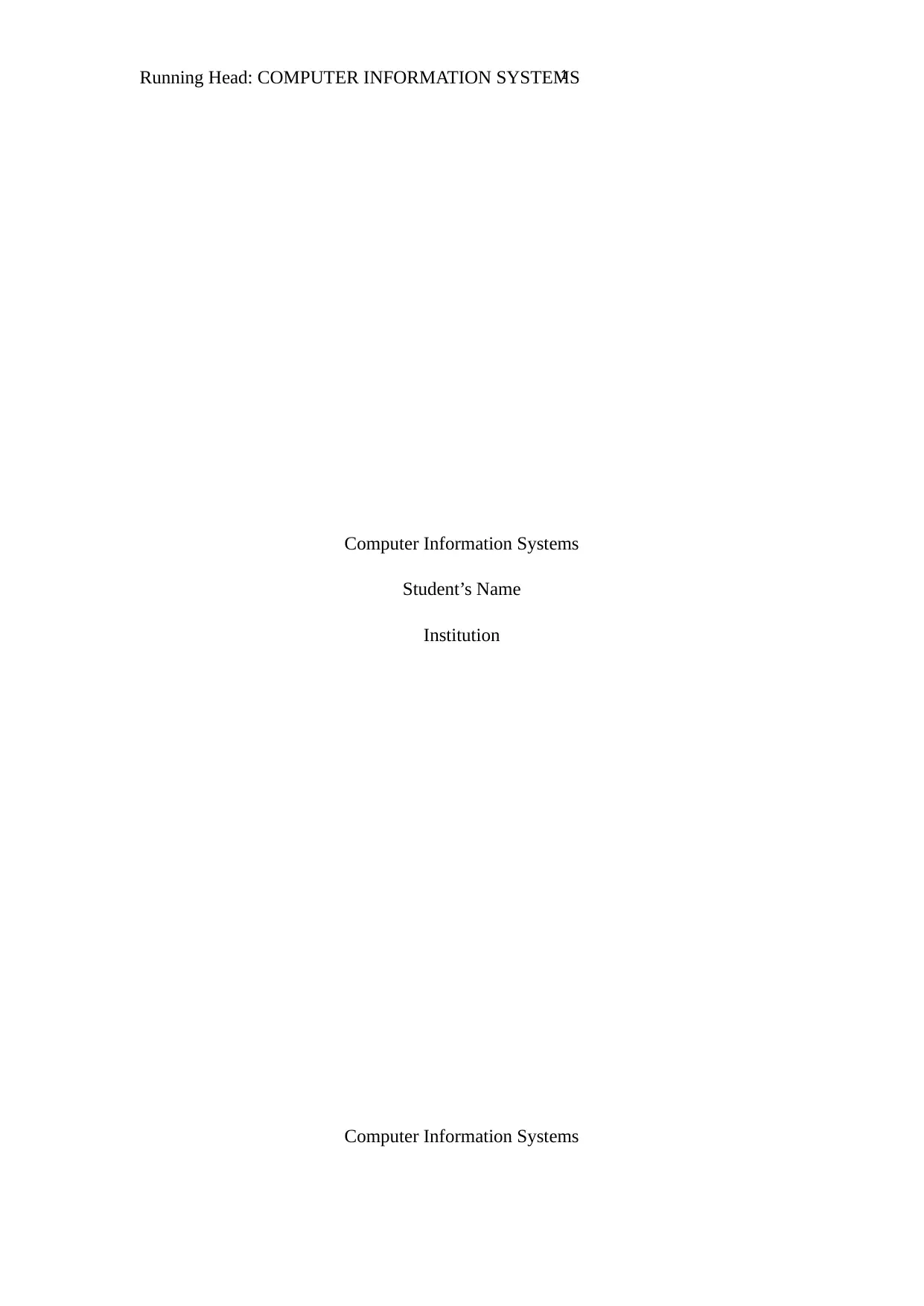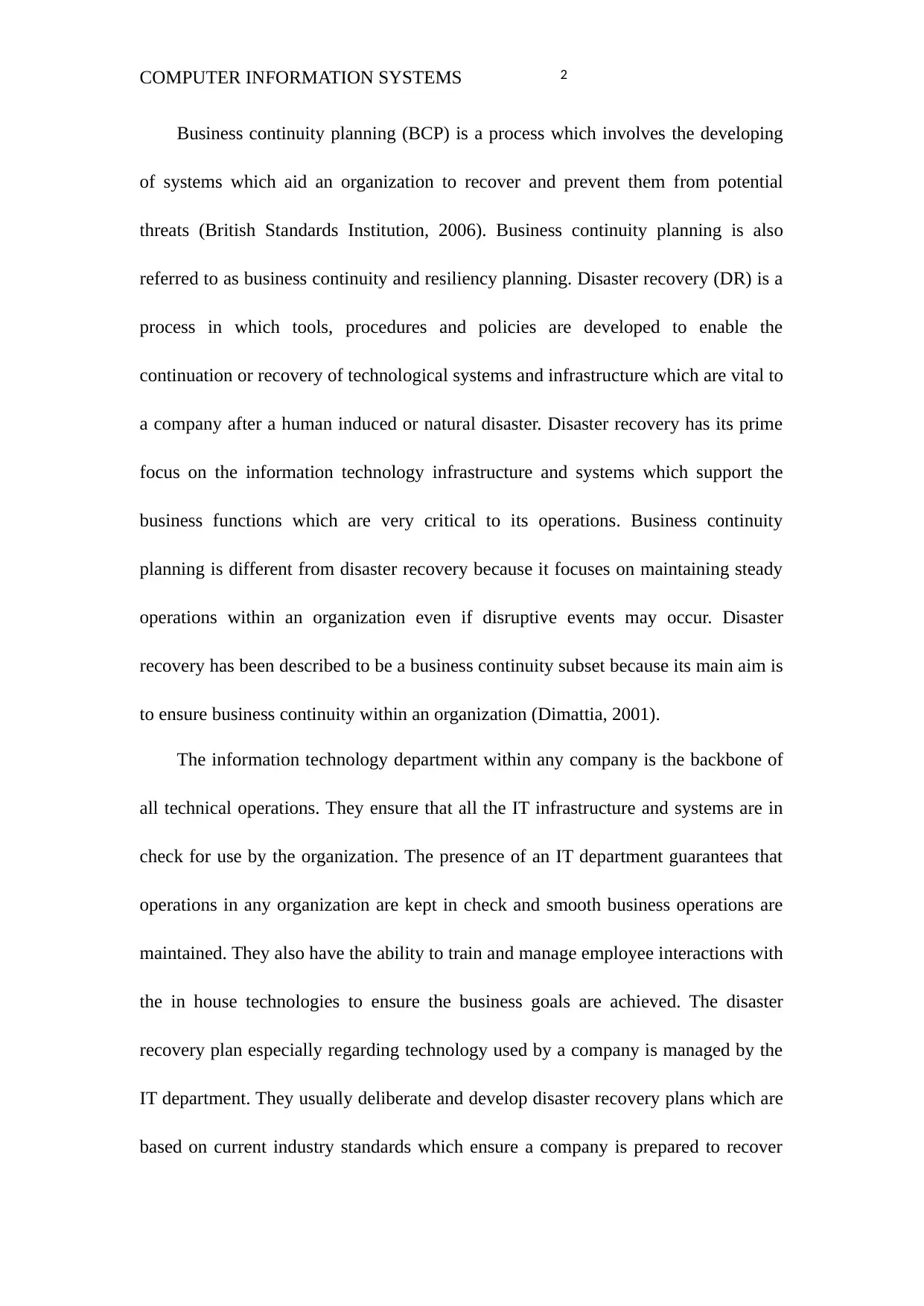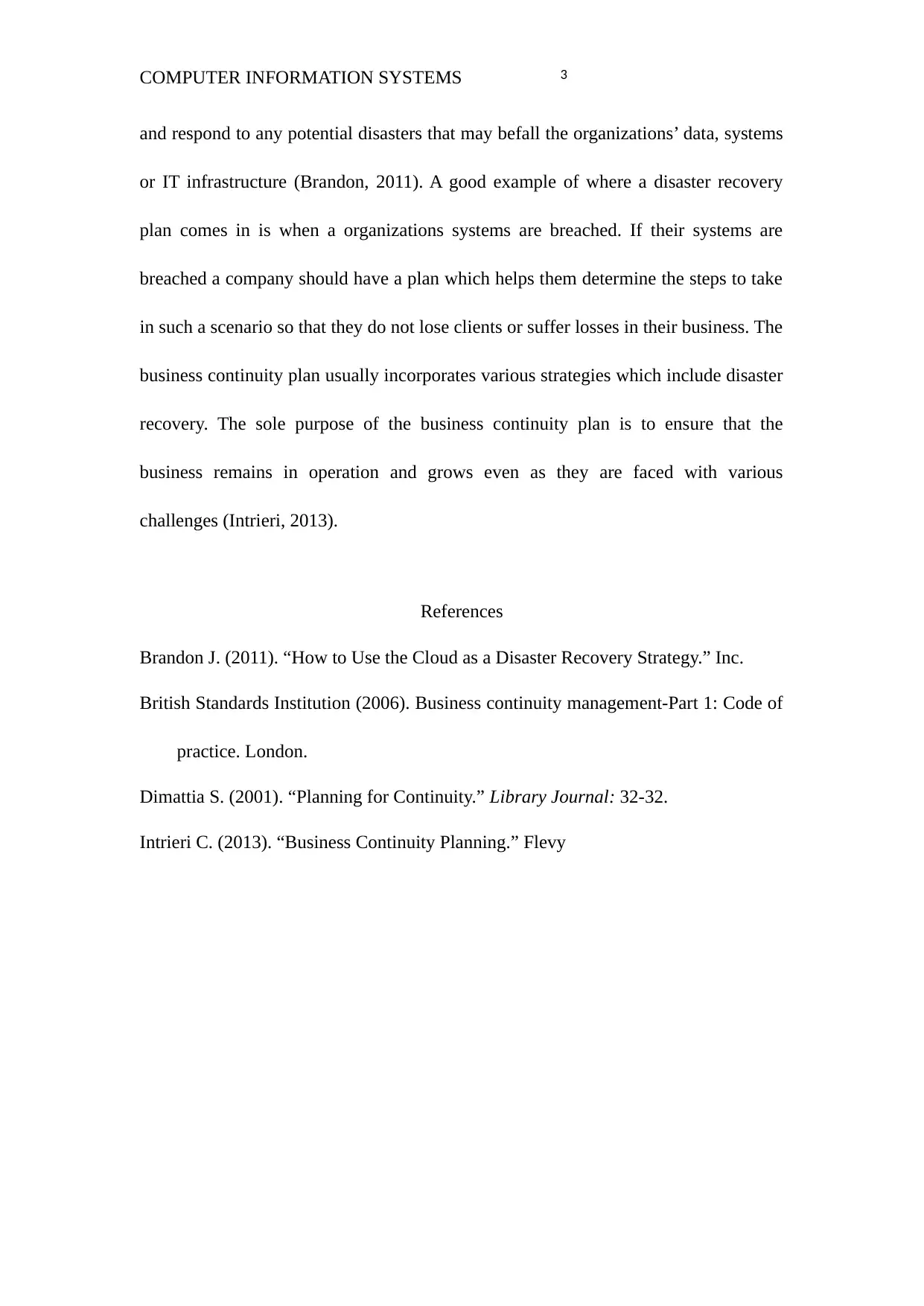Business Continuity vs. Disaster Recovery in CIS - Course Analysis
VerifiedAdded on 2020/04/29
|3
|507
|43
Homework Assignment
AI Summary
The assignment provides a detailed exploration of business continuity planning (BCP) and disaster recovery (DR) within the context of computer information systems. It emphasizes that BCP involves creating systems to help an organization recover from potential threats and maintain operations during disruptive events, while DR focuses on restoring critical IT infrastructure post-disaster. The distinction between BCP as a broader strategy encompassing business functions, including DR, is discussed. Additionally, the role of the IT department in managing disaster recovery plans using current industry standards is highlighted to ensure readiness against data breaches or other crises. The assignment underlines the importance of integrating disaster recovery strategies into overall business continuity plans to sustain and grow business operations despite challenges.
1 out of 3










![[object Object]](/_next/static/media/star-bottom.7253800d.svg)